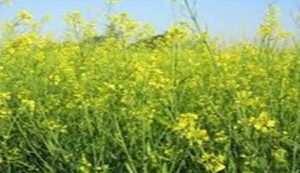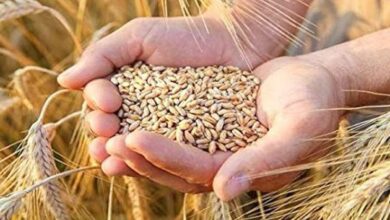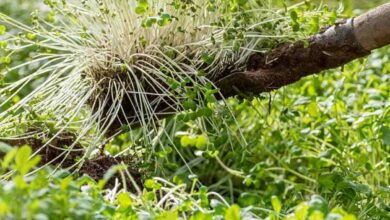Pay special attention to these things while cultivating Pusa Double Zero Mustard 33; bumper yield will be there in less land
Pusa Double Zero Mustard 33: In India, mustard is a major crop grown during the Rabi season, and farmers are increasingly using modified cultivars to increase output and enhance quality. The Indian Agricultural Research Institute, Pusa, has created an improved strain of mustard called Pusa Double Zero Mustard 33. This type is well-known for its superior oil quality, high production capacity, and resilience to disease. Please describe the qualities of this variety and the best ways to cultivate it.

Cultivation of Pusa Double Zero Mustard 33
The improved type of mustard, Pusa Double Zero Mustard 33, is mostly suitable for cultivation in Zone-II, which encompasses the plains of Jammu and Kashmir, Himachal Pradesh, northern and western Rajasthan, Punjab, Haryana, Delhi, and western Uttar Pradesh. This cultivar thrives when seeded under irrigation conditions on time.
Main Characteristics
With just 15.2 ppm of glucosinolates and 1.13% erucic acid, the enhanced mustard variety Pusa Double Zero Mustard 33 complies with food safety and health regulations. This type has a high oil content (about 38%), which benefits producers financially. It resists the white rust disease and has yellow-colored seeds. In addition, it can withstand low levels of water stress, which makes it a perfect option for dry climate cultivation.
Production Capacity
The enhanced Pusa Double Zero Mustard 33 mustard variety may produce up to 31.8 quintals per hectare, with an average output capacity of around 26.4 quintals per hectare. This type is a medium-term crop for growers, maturing in around 141 days. Farmers may receive higher yields from this variety with timely seeding and appropriate care.
Sowing Methods
Seed Rate and Distance: Three to four kg of seeds per hectare should be sown for Pusa Double Zero Mustard 33. To ensure that the plants have enough room and nourishment, maintain a spacing of 10-15 cm between plants and 30-45 cm between rows. The number of plants increases when the distance and seed rate are appropriate, which benefits the yield.
Sowing Depth: The seed should be sown 2.5 to 3.0 cm deep. While planting at a lesser depth deprives the seedlings of the essential nutrients, seeding at a deeper depth may have an impact on germination. As such, it is crucial to pay attention to the proper depth.
Planting Time: October 15–20 is the ideal window for planting mustard. This time of year for seeding improves plant development and production. If, for whatever reason, planting cannot be completed by the deadline, it may still be done between November 1 and November 20, but it will need careful attention, particularly to guard against weather fluctuations.
Fertilizer Management: A healthy mustard yield requires a balanced application of fertilizers. The proper amounts of sulfur, phosphorus, potash, and nitrogen should be applied. Soil testing may help identify how much fertilizer is needed to provide the right quantity of nutrients to the plants. The production and quality of the crop may both be enhanced by the proper distribution of nutrients in the soil.
Irrigation Management: Considering crop requirements and water availability, the number of irrigations should be determined. One to three irrigations are usually enough. 35 to 40 days after seeding is when the first irrigation should be completed, and blooming is when the second irrigation should be completed. The quality and production of the crop are both increased by timely irrigation. In order to prevent a scarcity of water, it’s also critical to check soil moisture.
Disease and Pest Management: Farmers should exercise caution to avoid brown rust and powdery mildew, as well as white rust disease, even if the Pusa Double Zero Mustard 33 type is resistant to it. For the control of diseases and pests, chemical and biological approaches are both viable. Crop damage may be avoided by checking the plants on a regular basis and applying timely treatment.
In this case, we can state that Pusa Double Zero Mustard 33 is an enhanced type that offers farmers higher oil quality, increased yield, and resistance to disease. Aside from this, it is a great option in many places because to its low water requirements and resistance to white rust. Farmers may maximize the benefits of this cultivar by managing irrigation, fertilizer, and seeding correctly.





